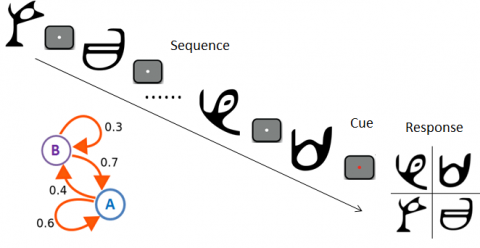
Previous experience is thought to facilitate our ability to extract spatiotemporal regularities from cluttered scenes. However, little is known about how we exploit this knowledge of visual statistics to predict future events. Here we use an integrated interdisciplinary approach to investigate the computational and neural mechanisms that mediate predictive learning; that is, our ability to learn about structured sequences of events in the environment and use this information to predict upcoming events. We employ computational algorithms (Markov models) to design hierarchical temporal sequences of increasing complexity (from simple repetitive to complex combinatorial patterns) that resemble probabilistic structures that are typical in the environment (e.g. in language, navigation). Our work aims to: (1) characterize the learning principles and strategies how we extract hierarchical temporal structures, (2) identify the brain mechanisms that mediate our ability to translate this previous knowledge to predictions about future events (3) understand individual variability in predictive learning ability and determine the corresponding brain markers. This work does not only provide novel insights in understanding the link between neural plasticity and adaptive behaviours, but has potential practical implications for the design of education and rehabilitation training programmes for life-long learning in healthy development and disease.

